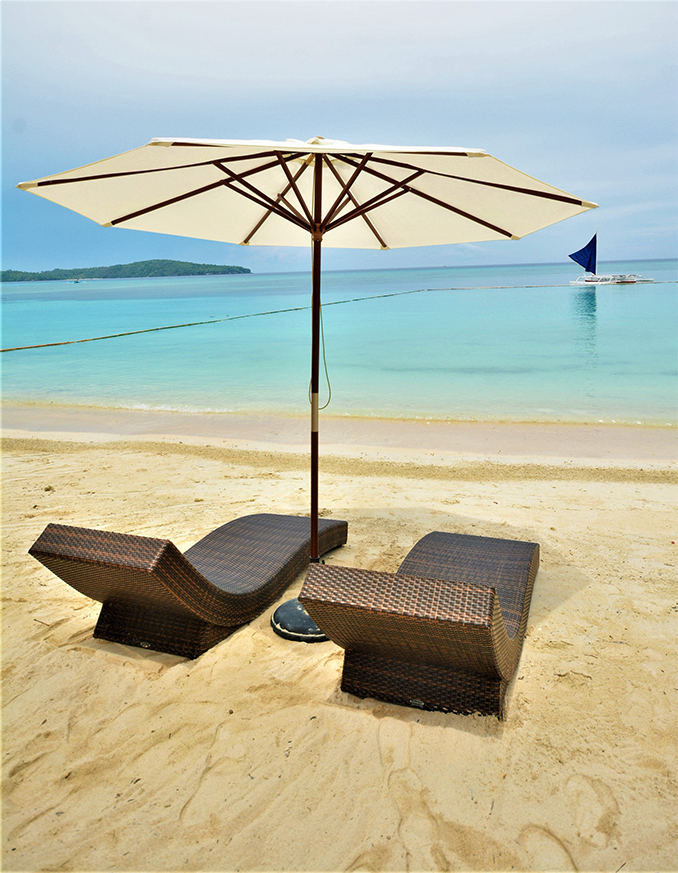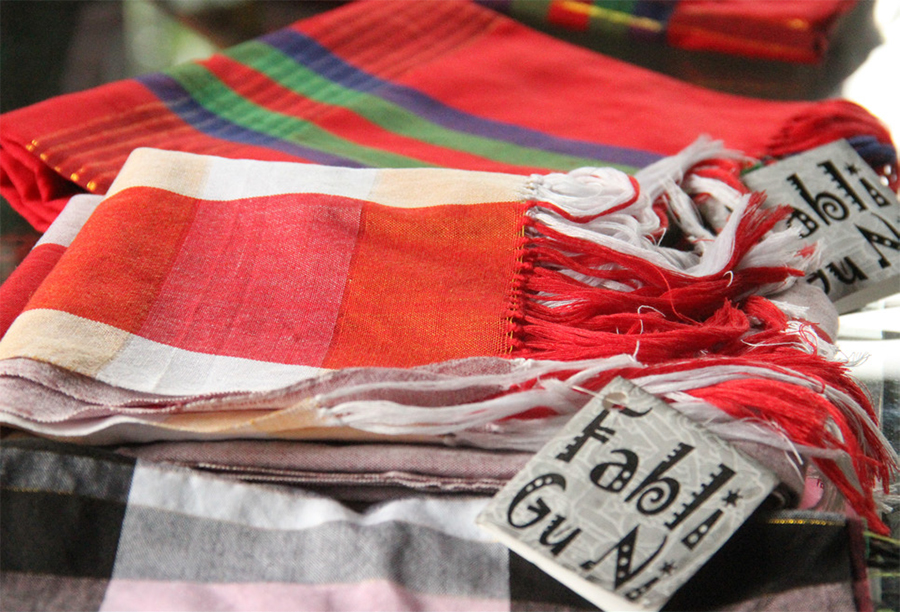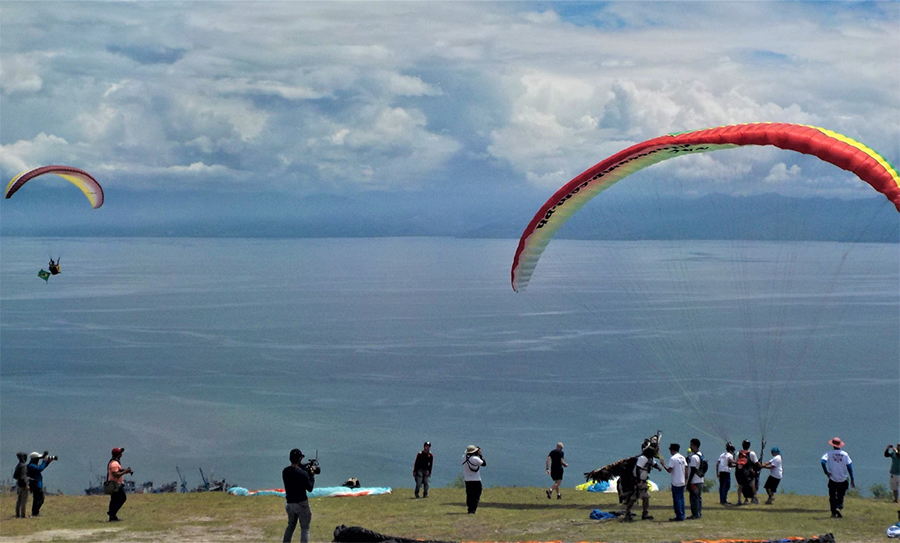
By Bernard L. Supetran
An archipelago of 7,641 idyllic islands, the Philippines is a virtual waterworld where various bodies of water come into play. The southern province of Sarangani is a shimmering example why the country is the ultimate natural playground for lovers of water—whether it be for aquasports or simply frolicking on the beach or the refreshing splash of rushing rivers.
Embraced by the lush Sarangani Bay, this unheralded getaway will surely dazzle beach bums. Declared a Protected Seascape and a Key Marine Biodiversity Areas, this gigantic 226-km cove of an infinity of enthralling beach escapades both on the surface and beneath.
With a surface area of 215,950 hectares, the bay boasts of a 2,293-hectare coral cover spread over 20 reef areas with some 60 live hard coral genera, 411 reef species, and a 912-hectare seagrass cover. Because of its marine diversity, it has been named by the Department of Tourism as the scuba diving haven of the Soccsksargen Region.
Scuba divers will be mesmerized by the remarkable assemblage of coral and aquatic animal life at the socalled Tinoto Wall right below Lemlunay Resort in Maasim town, the province’s top dive spot. Within the municipal waters is Maasim Reef which abounds in of juvenile whitetipped sharks, huge fan corals and gigantic bat fishes, and astounding gardens of marine flora.
At various points of the bay, divers can sight yellow fin tuna, dolphins, clown fishes, lion fishes, sergeant fishes, sea turtles, whale sharks, cheilinus undulatos (Mameng), dugongs (sea cows), and an assortment of exotic aquatic life.
Beach lovers will find a charming retreat in Gumasa Beach in Glan, a mile-long stretch of powdery white sand and crystalline water which is a quiet escape without the madding crowd. The coastline is dotted with cozy boutique resorts which offer culinary treats and stunning panoramas. Come summer time, these sleepy shores turn into a hive of watersports and family-oriented recreation with the Sarangani Bay (SarBay) Festival, the country’s biggest beach party.
Sun-worshippers can also laze in the sun, sea and sand at Tuka Beach, a patch of powdery sand tucked at a secluded cove in Kiamba. Its piece de resistance is the marine park, a protected sanctuary where fishes spawn, making it a haven for snorkeling and free diving.

After basking in the sea, one can hie off to the town’s upland area to chill and rinse at the refreshing waters of the three-tiered Bocay-el Falls which form icy natural basins.
A must-try water adventure is the whitewater tube ride at Pangi River where one can get an adrenaline rush along the waist-deep rapids. Situated at Maitum’s inroads, it is a community-oriented ecoadventure tourism spot which is ideal for close-to-nature activities and overnight camps in its riverside cottages.
After basking in the water, guests can indulge in the ancient art of weaving in Sarangani, a melting pot of indigenous lumad and Islamic tribes.
With a rich tapestry from all cultural stripes, visitors can immerse with the Blaan tribes at Lamlifew Community Village Museum in Malungon town, the first of its kind in the country, which chronicles their ethnic heritage, organic agriculture, and the intricate mabal tabih weaving.

This award-winning cultural project is as close as one can get to authentic Blaan way of life. Tucked in an interior village, guests are welcomed by villagers in traditional regalia to the beat of percussion instruments and the music of the twostringed faglong guitar.
The area’s core is the Gumusek (museum) and Fles Yu de Blaan (School of Living Tradition) where native women, some of them nonagenarians led by master weaver Gusiye Buan, spin the mabal tabih, an exquisite abaca fiber which is regarded as Sarangani’s crown jewel of cultural resources.
Further into the hinterlands is the Tagakaolo tribe, one of the lesser-known but equally-colorful lumad who take pride in their own exotic tapestry.
On the other side of the province is another gem of a fabric from the Maguindanaon community—the inaul. Handwoven by local women in Malapatan town, this silky fabric has found its way into the world’s prestigious catwalks as accents of Filipino haute couture.
A unique craft is igem (mat) weaving by a Blaan community in an upland hamlet which has been getting public attention with the Gawad Manlilikha ng Bayan (GaMaBa) accolade given to its master weaver Bai Estelita Bantilan last year. Also known as the National Living Treasure award, it is the highest recognition accorded by the government to traditional artists whose skills have reached a high level of technical and artistic excellence.

And for an all-time high experience, you can paraglide from the fly site in Maasim with a breath-taking view, quite literally, of the mountains, the bay, and everything in between.
With the confluence of wind, weaves and waterworld, Sarangani packs a knockout punch much like its home-grown boxing champ.
Getting There: Sarangani can be reached by air via Gen. Santos City Airport. From there, the different towns can be reached by aircon bus, UV Express van or rent-a-car.
With the confluence of wind, weaves and waterworld, Sarangani packs a knockout punch much like its home-grown boxing champ. VOL. 18 ISSUE 12 DECEMBER 2019








